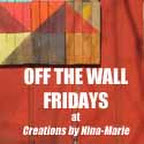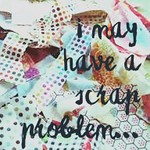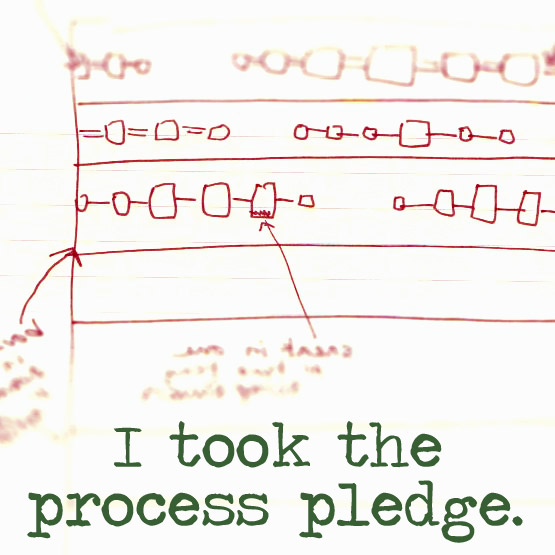I finished this one first –you know the old ploy, do an easy finish first to get your energy going. And small meant it would finish quickly. It took a while to get a photograph, and in the process I learned how to change the number of pixels. I also learned I could find the number of pixels via iPhoto, and when I did, I barely had enough. So no change was necessary.

21 x 22
You might notice a change from the previous “finished” top. It measured less than the required minimum of 20 inches in each direction. So the partial border on the right side. In some ways it completes the look, so it is an error that helped the design. Perhaps it also helps the theme by stopping the flight of the last piece of the prohibition sign.
After reading Elizabeth Barton’s post about artist statements, I ponder how much I should say about what I was trying: in her thinking, if it has to be said, I didn’t accomplish it. I’m not sure how I feel about this. As a viewer, I know I’ve had my interest in a piece expanded by an artist’s statement (both in quilt art and paint art). Maybe that just means I am an unsophisticated viewer.
Caution aside. The Threads of Resistance call was for pieces expressing anger at an action of #45 or sadness about a loss caused by his actions. I chose to express anger at deregulation and all the harm it would do to the environment. (I’m curious–to what extent do you see anger or not?) In addition, when looking at it, I kept seeing hints of the traditional block, Moon over the Mountain. And I thought that too fits if you think of the loss caused by mountain top removal for cheaper, easier mining of coal–a precursor to today’s more intense deregulation. All we have left of some of those mountains is a trace, if that. I did not put the idea there; I saw it there.
Then there are ideas I neither put there nor saw there. As one comment on the finished top suggested: it actually shows freedom. In that case the mood would not be anger but exuberance. (Once again, what feeling does it make you feel, if any?) And I am reminded of grad school discussions of Paradise Lost: Is Satan the hero regardless of Milton’s intent?
And there is the problem of titles. In an abstract piece, do I want to direct/limit interpretations by the suggestiveness of my titles? As a viewer, I resent titles like “Untitled” or “Red dots on green squares.” Yet doesn’t anything more specific start to direct the viewer to see in a certain way (or to realize what is missing if the artist failed)? Is an appropriate title “Deregulation” or “In the Eye of the Beholder” or “Red on Blue”? to what extent is a title a limitation? An expansion?
These are not rhetorical questions: I invite discussion.
The quilting:

This detail photo captures most of the quilting variation: micro stippling in the inner circle reminiscent of the old atomic bomb shelter symbol’s triangles, miniature prohibition signs tossed around, and then more generic wavy lines and straight lines. The mottled aqua, not shown here, is quilted with a moderate sized meander.
I recently read that there were 500 entries, and they don’t yet know how many their venues can hold since the list of venues is not complete. So my chances of getting into the show are barely better than to get a quilt into QuiltCon. But as the director of Quilt National said, “Every quilt in the show was entered.”
I’ve seen one other quilt entered, my friend Mary’s at Zippy Quilts. Do have a look at her quite different approach to the theme. I am hoping for a photo gallery on the Artists’ Circle’s Threads of Resistance blog.
I plan to link with Nina Marie’s Off the Wall Friday (button in sidebar).
Quilt History
“Finished” top
Preliminary sketches made
The call for entries (now concluded)
5/14/17 ETA link to see all the entries




































